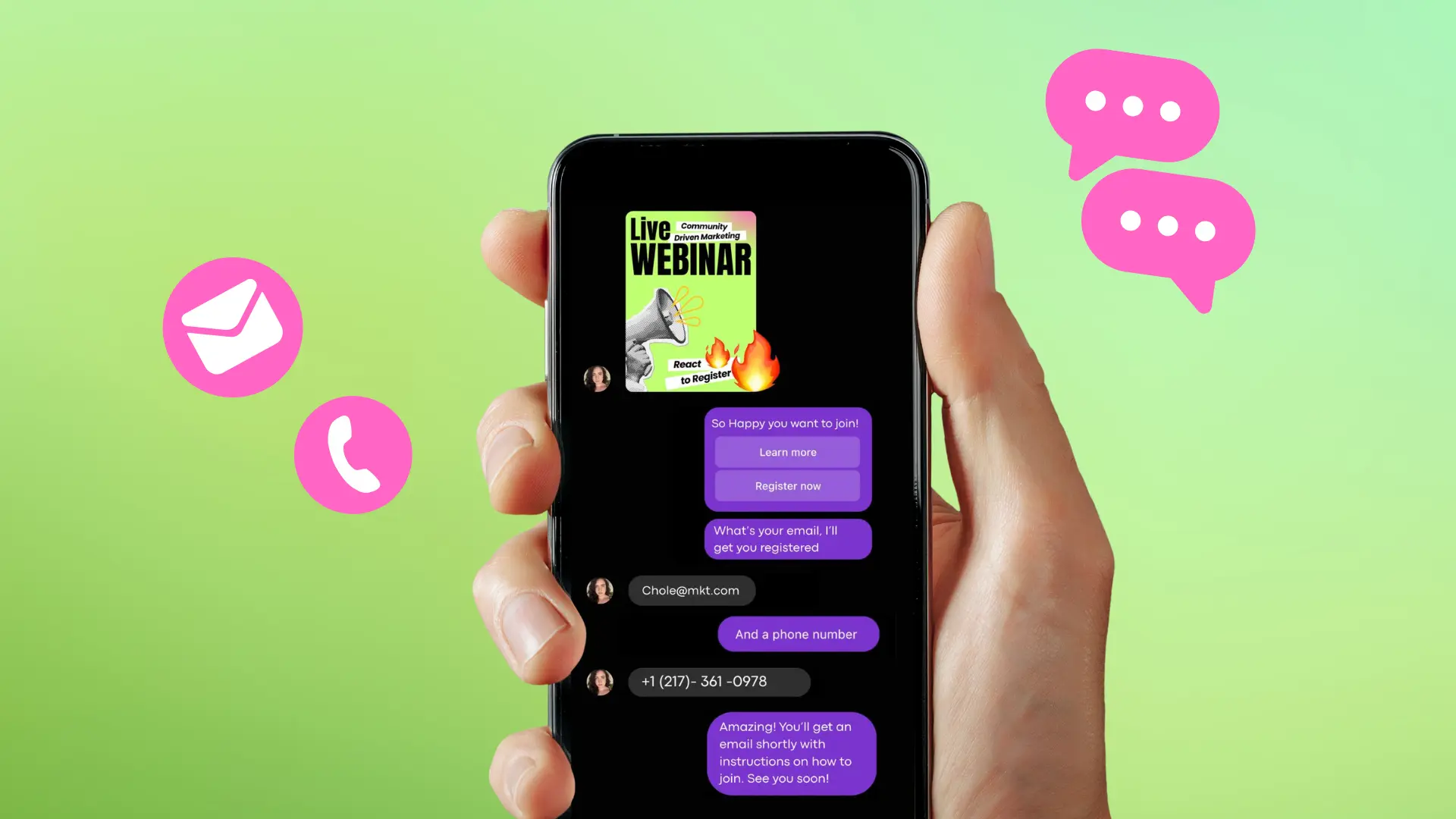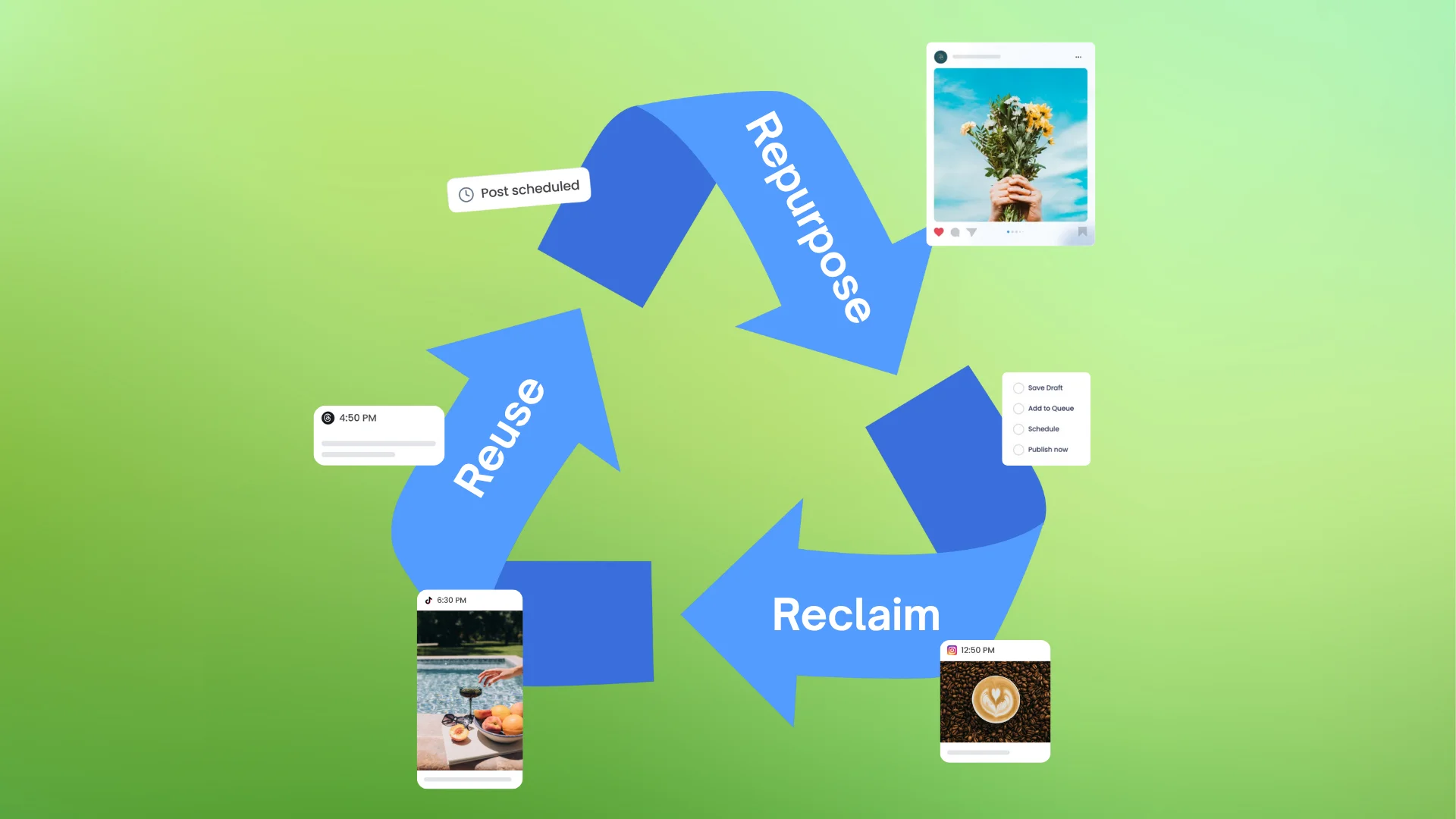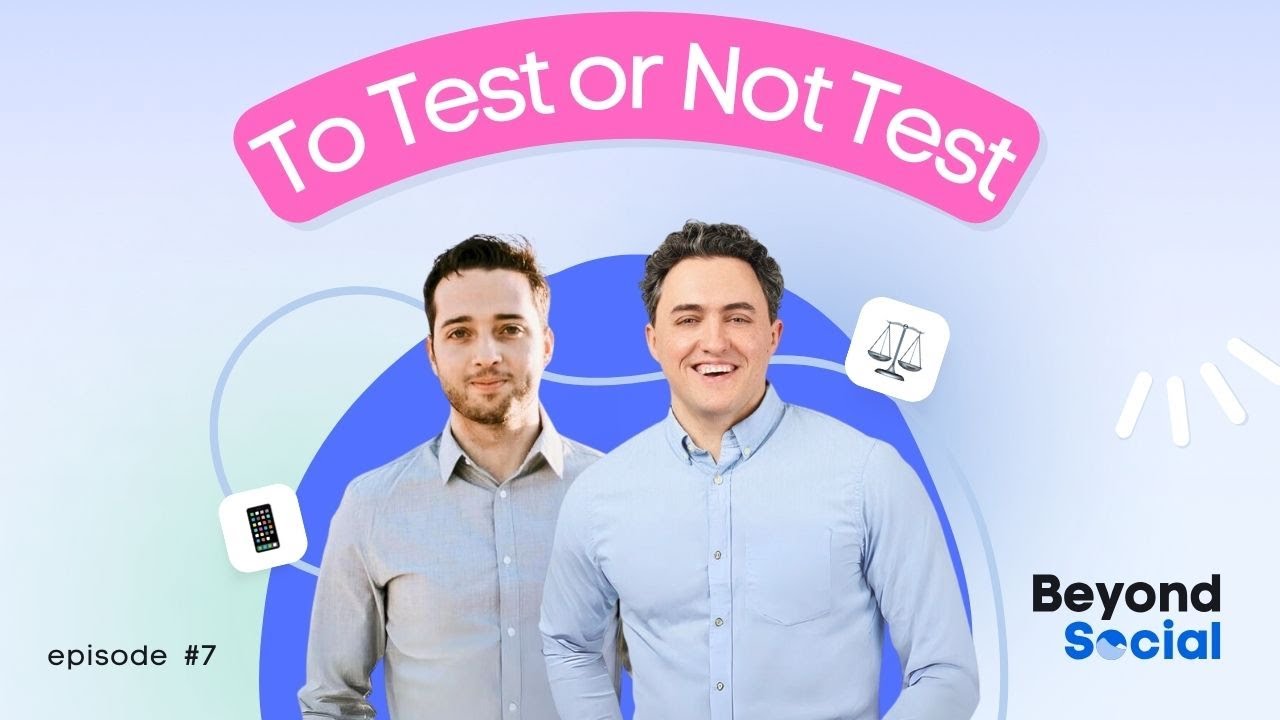New

Turn Your DMs Into Lead Gen!
Learn how to collect lead data from your DMs such as email addresses, phone numbers, and more right from your social inbox. If you are not yet automating your DMs your competitors are outpacing you.

How Something Social Saved 75% of Their Time and Increased Revenue by 15%
See how a fast-growing agency improved operations, cut down hours of manual work, and unlocked new revenue opportunities with Vista Social.
New

50 Unique Social Media Ideas for Consistent Content Creation
Discover 50 unique social media post ideas to engage your audience, grow your brand, and maintain a consistent content strategy with ease!

Mastering Content Reuse: The Key to a Consistent and Sustainable Posting Strategy

Table of Content

No customer in the world wants to wait months for something to be built today. Hey, welcome to Beyond Social, the podcast that brings you the latest social media trends, uncovers cutting-edge tech, and really just where we talk about running software companies. I’m Reggie, head of customer experience at Vista Social.
In today’s show, I really kind of want to dive into something that I heard the other day, Vitaly. I was talking to somebody and came across this concept of tech testing environments and such. And I want to ask you this, I know we’re kind of on air, maybe live, maybe some things will have to get cut out, but is it true? Do we not have a testing environment? And again, I’m not a very techy kind of person, I’m not involved in the day-to-day of technical things.
Table of contents
The Traditional Software Development Lifecycle
Yeah, it’s a valid question and it’s indeed maybe something that we may not discuss as freely on air. But essentially, what you’re referring to is this notion that any technology product right has multi-staged environments for testing, verifying, prototyping, getting user feedback. All of that is sort of necessary generally in the software life cycle to deliver quality product. As you can imagine, that is a lot of layers and that is a lot of processes. So which that means that any particular feature that anybody wants to say develop on our end, we would if we played it by the book, if we just sort of implement it as software development theory suggests, we would have to have quite a bit of documentation, have quite a bit of timeline allocation, we have to have teams, we have to have management of teams.
What do you do in a case when you have a very clear improvement, clear feature that you want to build and you want to get it launched today, like in an hour, right? It’s it’s visibly simple or maybe reasonably non-complicated functionality, you want to get it out quickly. So, and I think from that standpoint, yes, sometimes and perhaps quite often, our process bypasses quite a bit of stages that in normal or perhaps in more theoretical software development life cycle would go through for the sake of speed and delivering value to the customer.
Why Copy-Paste Processes Don’t Always Work
Yeah, an interesting thing here, and I guess maybe the core of why I wanted to bring this up too is that there’s almost this notion that copying and pasting or trying to replicate some processes that you see some other organizations doing, maybe traditional organizations or organizations that have been in industries for I don’t know, dozens if not hundreds of years at this point, like the banking industry, that it makes sense to just copy and paste that into your organization or the business that you’re building. And I think that that’s not always the case, it is not always going to make sense for you to copy and paste these these practices.
Absolutely. Listen, I come from a very sort of traditional enterprise technology background. I’ve worked for the I’ve worked for top banks, for top technology companies. I’ve certainly been trained and you know and indoctrinated into thinking a certain way of how software development needs to be done. However, this, as you point out, is very difficult to replicate on a team that is much smaller, right.
The Trust Factor in Team Building
And you would need to do this in a way where you first of all build the right team, right, that you trust enough. I think a lot of these processes come into play when this notion of nobody really wanting to be liable in the end for something that gets into a life system, or perhaps there is an outsourced team that nobody really trusts. And when I say trust, I don’t mean anything sinister, I’m just saying human factor, things can happen, right, and you develop these processes. But I think as you do, you also somehow destroy this culture of delivering quality work out of the gate.
Marketing Parallels: Approval Processes Gone Wrong
But I think I can see the right here where it’s not necessarily just bypassing processes for the sake of it. It’s really about can I streamline decision-making processes for the overall benefit of the organization, right? And I think that’s really the idea. And if we were maybe to take this into a parallel with, you know, me me coming from customer experience, a lot of the customers that I speak with, a lot of maybe the audience members who are listening to to us are maybe in the marketing industry, right, business industry. And I’ve, you’d be surprised how many times I have conversations with, you know, agencies, that I won’t necessarily say large agencies, maybe some medium-sized agencies, who have very intricate approval processes around just a social media post going out, where it’s got to go through maybe four, five, six revisions of approvals, not changes, just approvals until it goes out.
Try Vista Social for Free
A social media management platform that actually helps you grow with easy-to-use content planning, scheduling, engagement and analytics tools.
Get Started NowLearning from Competitors vs. Learning from Their Origins
Perhaps the way to look at it sometimes when you do compete with, you know, against a larger company that is well established, to look at their roots, right? To see how did they start, what were some of the strategies that they employed back in the day, right? And arguably, I mean, sure, Jeff Bezos when he was starting Amazon, right, he probably didn’t have a test environment either, right, when it came to technology, right? So, and but eventually he did. So I think it’s it’s all about how to get from point A to point B effectively, and theory is irrelevant, right? This is not this is not an interview, right? There is not a right, it is whether you’ve achieved the result and wrong is when you didn’t.
The Power of Employee Empowerment
Yeah, and I do want to circle back to what you said because I think it’s so so powerful and so interesting, the trust piece, right? Am I going to be questioning my engineer, my developer, my team member’s qualification or the decision that I made to bring them on? And obviously we’re not saying dismiss the aspect that there needs to be exceptional training involved, right? The the the vision, the guidelines and maybe boundaries need to be abundantly clear in the training material, whatever it is, for the team, for the organization. But I think really, like you’re saying, beyond that, it’s about when you can taking that step of trust, right? Because that creates that level of of efficiency for the organization, which I think then probably even leads into employee empowerment.
Hiring for Care, Not Just Skills
I think, I think weaker cultures, right, certainly underperform, right? So better cultures would always outperform even if they are not as numerous, even if they’re smaller teams. And I think taking your time, in our case, making sure that we grow just for the right individuals, right? And even the right individuals sometimes still need guidance, right? And we take that time. Essentially, and I know, I know we do it in technology and the product side. I know you guys do it in the customer success. And I know for a fact marketing team does it. It’s in the words of one of our developers, uh Roman, he says when I asked him, you know, what sort of person should we hire, his response wasn’t, oh, he should be, you know, the best at JavaScript, or databases and whatnot, or this many years of experience. His main point was, he needs to care, right? He needs to simply care about his work and the rest of it, like the tech stuff, like we can always teach that or improve upon that, and and whatnot. But the the this level of care is very rare.
Accepting Risk for Greater Speed
And I think once you have that in place, once you have the team where each individual is both careful, caring, and thoughtful, right, about the work they deliver, you can achieve a fairly amazing, uh, sort of process. You can set that up where indeed code can easily flow from inception, a developer taking a look at the feature request on our suggestions board, implementing quickly, showing it to maybe a person on the business side just to confirm, and then simply releasing it, right? Um, it’s it’s again, it’s it’s it’s quite extreme in principle, but at the same time, I don’t think, you know, establishing or implementing a process where nothing is trusted like that, nobody’s trusted, the the there is a process to verify another process or, you know, and and then there’s this endless cycle of testing, or there is a there is a QA, and there is a there is a quality assurance testing, there is a user acceptance testing, there’s some sort of another level of testing, uh, there is a regression test.
Scaling Trust: Can It Work for Larger Organizations?
Can this be extrapolated to a company of a thousand employees where a company is hiring 20, 30 people every month? Can you put put that number of people through that sort of sensible, uh, training, um, that I guess we’ll find out one day as we get that big? Uh, but for the time being, we are sort of we are pursuing that route.
Yeah, absolutely. And I think maybe to that noted too on the large larger organization, I was listening to a podcast, I think it was from Andy Stanley a couple weeks ago, where they interviewed the the, I don’t know if it was the former Home Depot CEO or the new Home Depot CEO, who came in and decided that they were going to empower their front-end team at the Home Depot stores to make calls on discounts with no exception.
Final Thoughts: Theory vs. Reality
Right, so I think the the notion that theory often times isn’t, uh, quite realistic about about the resources that are available. It isn’t quite realistic around, you know, the feasibility or even qualifications of executing that theory, right? I think, uh, that is some that that’s a reality, I think, for a lot of businesses, big and small, right? Uh, you may be big, but you may not have the right leadership, right, to execute on on on some of the theory. And and you’re going to have to implement more sort of surrogate processes that are synthesized in, you know, uh, certain elements of different processes.
Yeah, absolutely. Well, thank you again, Vitaly for the time, as always, awesome conversation. I think the answer I guess to my initial question is yes but no, right? There are a lot of complexities there. But thank you guys for tuning into this week’s show. Make sure to leave us a review, whether you’re listening on Spotify, Apple podcast, maybe watching on YouTube, we’d love to hear from you. So make sure you leave a review, leave a comment. And if you’re interested in maybe joining Vitaly and I, head over to our website, we’ve got a form for you to fill out if you want to be considered to be a guest on a future episode. And we’ll see you next week. Take care.
About the Author
Content Writer
Russell Tan is a content marketing specialist with over 7 years of experience creating content across gaming, healthcare, outdoor hospitality, and travel—because sticking to just one industry would’ve been boring. Outside of her current role as marketing specialist for Vista Social, Russell is busy plotting epic action-fantasy worlds, chasing adrenaline rushes (skydiving is next, maybe?), or racking up way too many hours in her favorite games.
Read with AI
Save time reading this article using your favorite AI tool
Summarize with AI
Never Miss a Trend
Our newsletter is packed with the hottest posts and latest news in social media.

You have many things to do.
Let us help you with social media.
Use our free plan to build momentum for your social media presence.
Or skip ahead and try our paid plan to scale your social media efforts.
P.S. It will be a piece of cake 🍰 with Vista Social
Subscribe to our Newsletter!
To stay updated on the latest and greatest Social Media news. We promise not to spam you!



